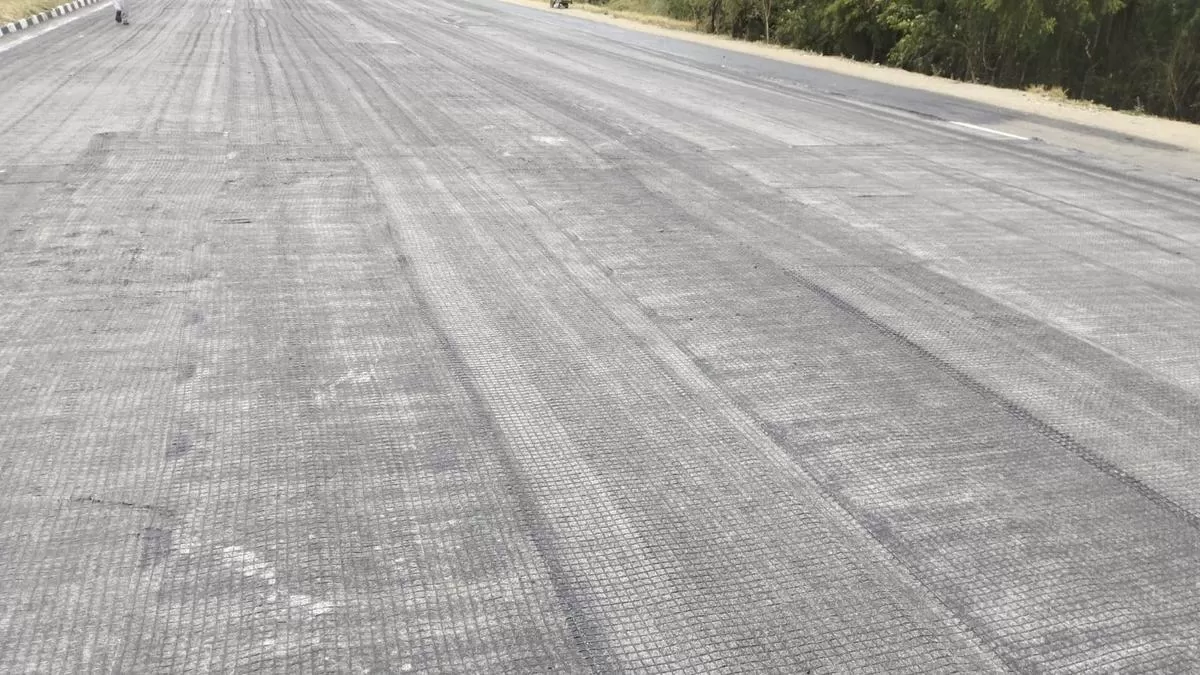The National Highways Authority of India (NHAI) has begun a trial using GlasGrid — a pavement reinforcement grid made of high-strength glass fibre — to repair identified cracks on the Chennai-Bengaluru Highway (NH-44) between the Walajah toll gate in Ranipet and Krishnagiri, aiming to enhance the durability of the 148 km stretch.
NHAI officials stated that this portion of the highway is maintained by Larsen & Toubro under a 30-year maintenance contract signed over a decade ago. According to norms, a full resurfacing of the entire stretch is carried out once every ten years, with routine maintenance, including patchwork, conducted every six months.
GlasGrid Technology
The GlasGrid trial was launched after the complete resurfacing of the road between Walajah and Krishnagiri. The performance of this new glass fibre reinforcement layer will be monitored for one to two years before wider adoption on other key routes, an NHAI official said.
Known as ‘GlasGrid RAPID’, the technology was developed by Saint-Gobain Adfors for NHAI. It consists of a thin, high-strength glass fibre grid, approximately one metre wide and 0.25 mm thick, which is laid over cracked sections of the carriageway like a plaster. A fresh 40 mm coat of bitumen is then applied to seal and strengthen the surface.
Saint-Gobain India reports that GlasGrid has been used successfully across India for over a decade to mitigate reflection cracking and extend the fatigue life of asphalt overlays, thereby improving pavement performance and longevity.
The technology is applied selectively to identified stretches where reflection cracking is problematic. For this trial, two locations on the stretch — Eraivankadu village in Vellore and Kannigapuram village near Ambur in Tirupattur — have been chosen. At Eraivankadu, 1.2 km has been reinforced with GlasGrid, while 2 km has been treated at Kannigapuram. The work is nearing completion.
Road Safety Enhancements
Currently, NHAI fills cracks on key routes only after fully milling the bitumen, a costly and labour-intensive process requiring a large workforce to remove the milled material.
In addition to resurfacing, NHAI has replaced the damaged steel median, refreshed road markings including pedestrian crossings, and cleared vegetation around the median.
To improve motorist safety, NHAI is raising the height of retaining walls on elevated corridors from two feet to five feet. Each corridor averages 800 metres in length and 15 metres in width, with approximately 50 such corridors—including railway level crossings—along the route.


